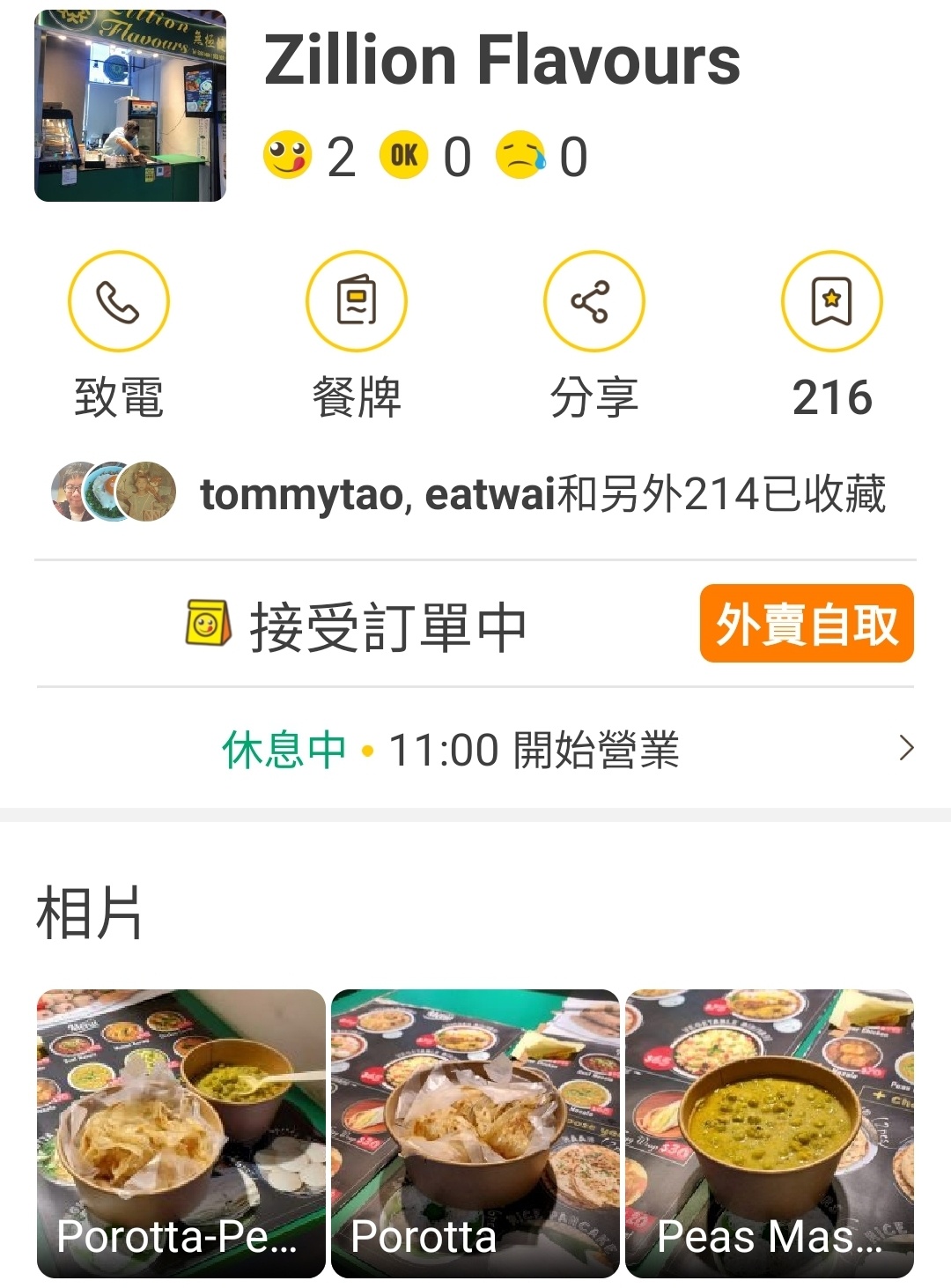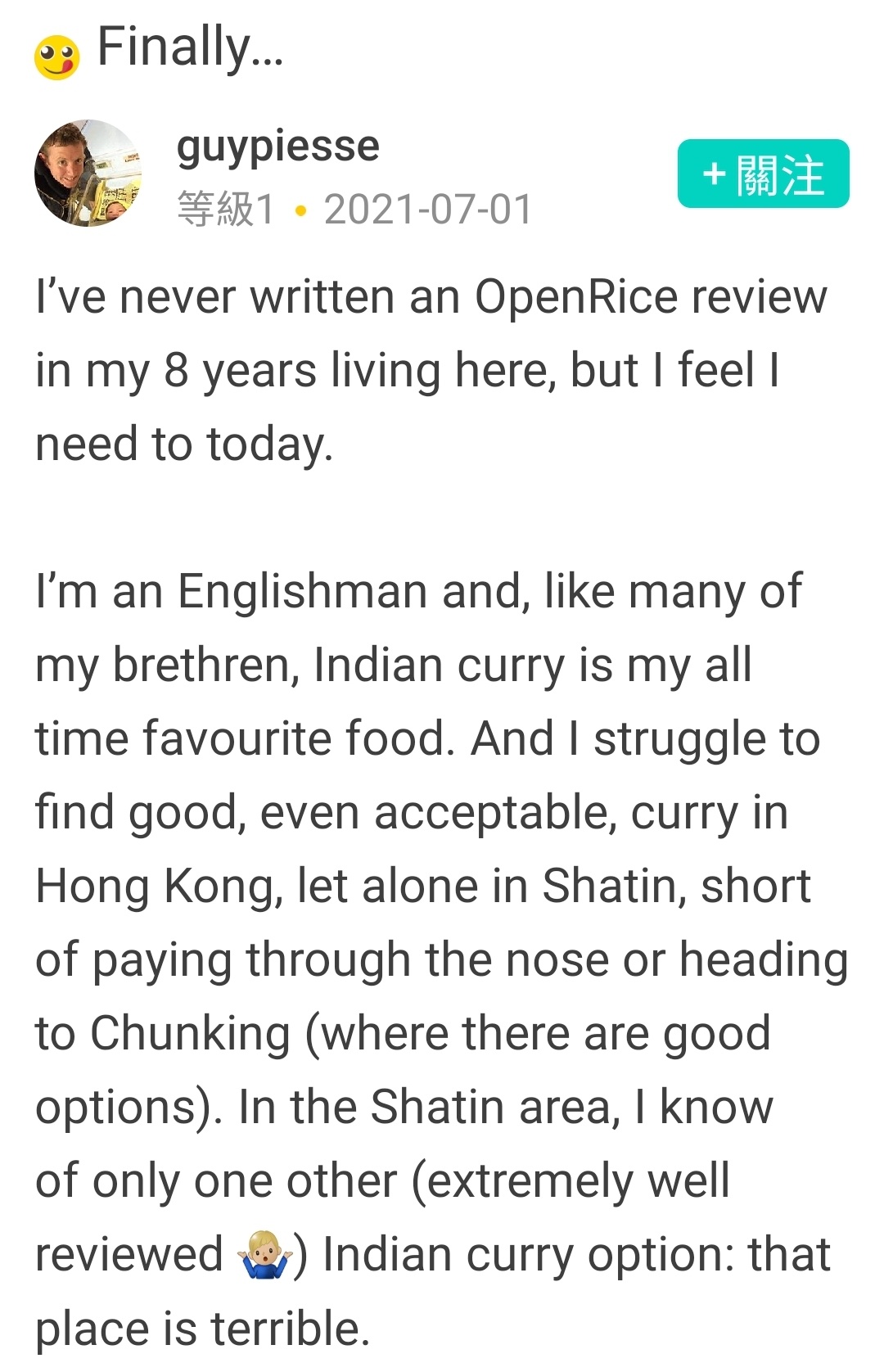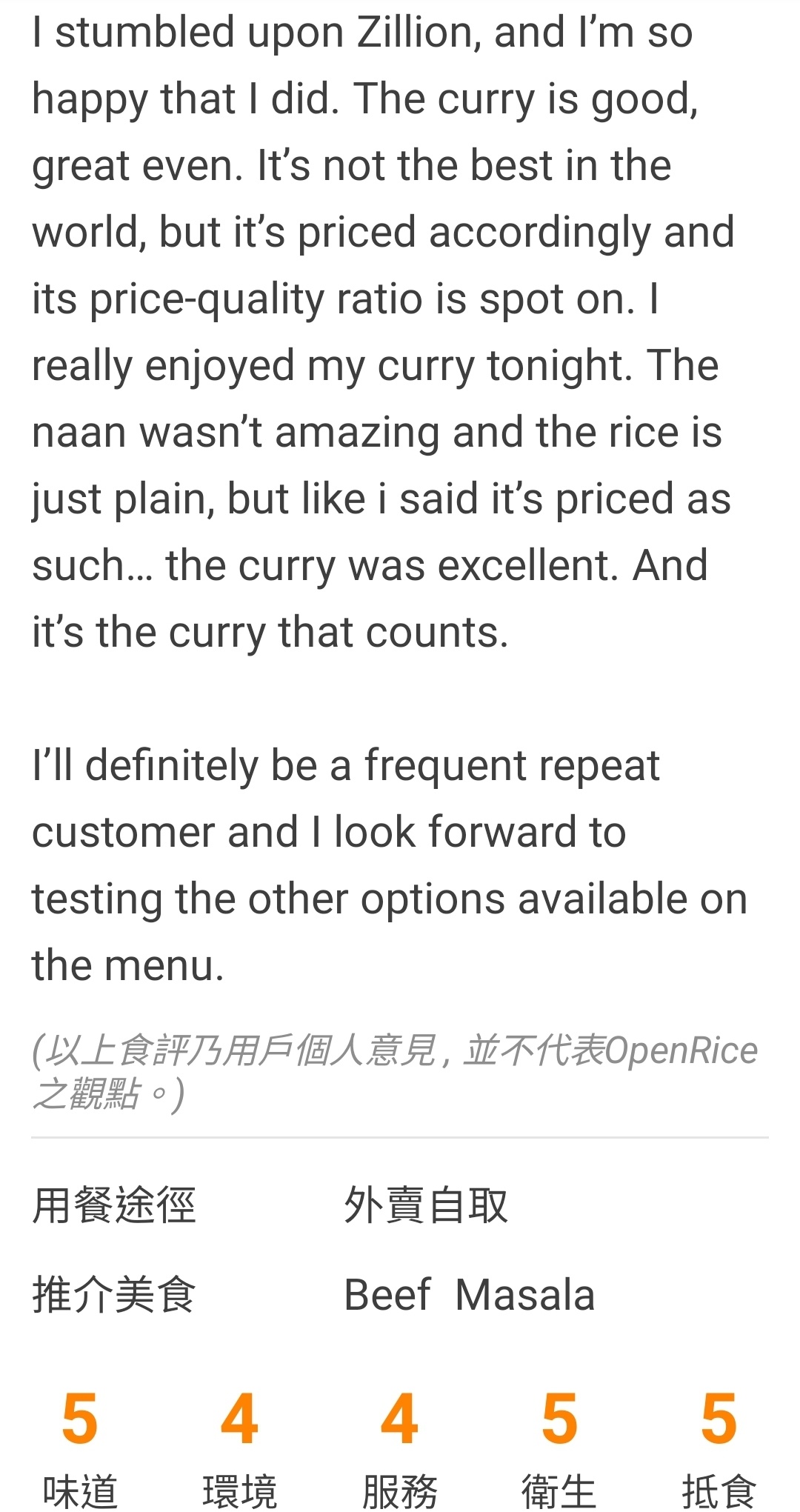香港人有個找餐廳時常常用到的app叫 「OpenRice (開飯喇)」,
沒想到祭五臟廟也能學到很道地的好英文。

在我因為避疫而逃家住飯店的整個3月,都被困於沙田區 (Shatin),
於是瀏覽 OpenRice 並且注意到附近一家印度菜,
居然有英國人寫過超棒的食評,
不管是他的評價還是英文都很優:

1️⃣ "I've never written an OpenRice review, but I feel I need to today." 這個用法夠簡潔又道地,不必重複前半句 (write a review)。
2️⃣ brethren = brother; comrade; fellow churchgoers = (同宗教的)弟兄姊妹
3️⃣ "I struggle to find good curry in HK." = I find it difficult to find...
這也是我雖然看得懂但很少想起用的寫法,一個 struggle 就又省了4個字,太厲害了!
--學英文就是要多觀察母語人士的說法。
他的食評還沒完,讓我們繼續看下去。

4️⃣ "I stumbled upon Zillion, and I'm so happy I did." 這跟1️⃣很像,也是言簡意賅,用 "I did" 兩個字就免卻重複說 "and I'm so happy I stumbled upon this shop" 的麻煩。懶得聰明懶得好~
stumble upon = 偶然遇上
5️⃣ price-quality ratio = 日本人所說的「CP值」(cost-performance ratio)
spot on = 正中紅心
整句就是指「以性價比來說恰如其分」,reasonably priced (價錢合理) 的意思。
6️⃣ 連用兩次【先反後正】:
♦ It's not the best (curry) in the world
♦ The naan wasn't amazing and the rice is just plain
然後才補上他想強調的重點:
➡️ but it's priced accordingly.
➡️ (but) the curry is excellent. And it's the curry that counts.
「雖然不是世上最棒的咖哩,但是價錢不貴」,
「雖然naan餅跟白飯都很普通,但是咖哩滿好吃的,而咖哩才是最重要、佔分數最多的部分」--
Exactly! 我去買咖喱飯吃,就是想吃到好咖哩嘛,不然,哪怕那裡的飯美味到會飛,我也是不會回頭再買第二次。
這一招【先破後立】用得讚,很有說服力。
7️⃣ commitment:I'll be back and try out other food items
沒有比這更promising的評價了,凡吃到美食自然會回味想要二訪三訪,而且會想試試其他單品看會不會同樣帶來驚喜。
😋 決定了!就去嚐嚐看!
只因為讀過這篇好評,我大費周章去把這間藏身冷巷中、很偏僻又很狹窄的隱世小店找了出來,而且兩周就光顧了4次。
店主是正宗印度人,只會說英文,
所以下一篇我會進入口說實戰的部分,
記錄我跟他的真實對話,還有介紹 Indian accent English 的特色:
https://supr.one/2mjVjrc2/post/625130d5e4b0a49b6224baca
此外,我在考慮多寫一些粉專沒有的 supr.one 獨家文章,敬請留意。